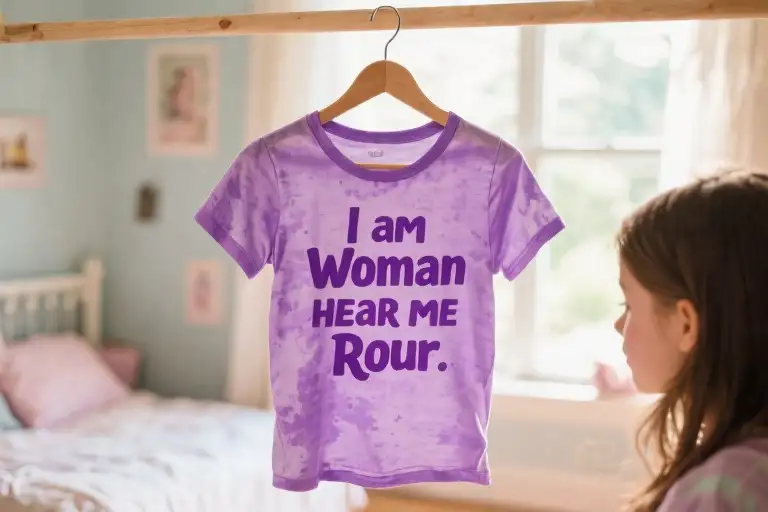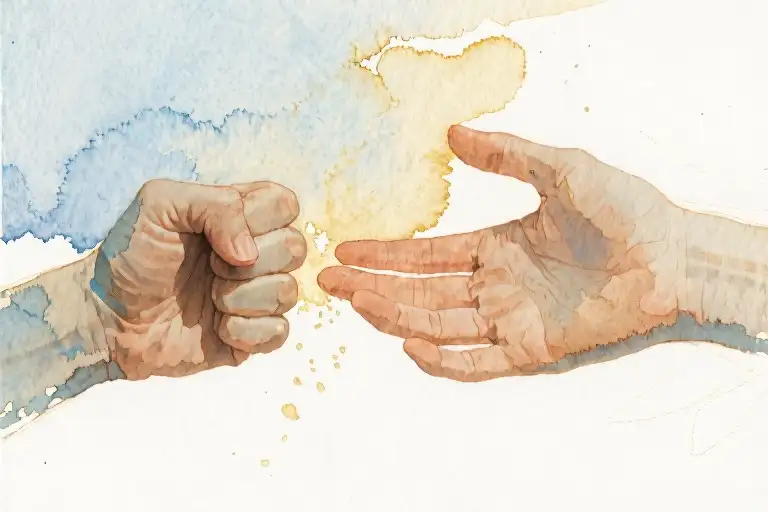The moment your mind goes blank during an important job interview, that split second when you fumble with the straw and send boba pearls flying across the table—we’ve all been there. Those heart-sinking instances where time seems to slow as you mentally scream ‘Why me?’ while scrambling to clean up metaphorical (or literal) spilled milk.
What makes these trivial mishaps haunt us for days? Why do we mentally replay that 30-second coffee stain incident more frequently than our actual achievements? The answer lies in our brain’s evolutionary wiring that treats social slip-ups with the same urgency as physical threats.
Here’s what nobody tells you: Those cringe-worthy moments aren’t failures—they’re secret badges of humanity. This isn’t another pep talk about ‘learning from mistakes.’ We’re going deeper—exposing how society’s obsession with flawlessness turned natural human behavior into perceived defects, and more importantly, how to reclaim those messy moments as your greatest assets.
Consider this your mental software update. By the end, you’ll see your most embarrassing blunders through an entirely new lens—one where the coffee you spilled becomes proof you’re not a Stepford Wife, the interview brain freeze reveals your growing edge, and that bubble tea explosion? Pure comedic gold waiting to be appreciated.
We’ll unpack:
- The biological reason your palms still sweat remembering that time you called your boss ‘mom’
- How Instagram culture hacked our perception of normal human behavior
- Three unexpected superpowers hidden in every social faux pas
- Immediate damage control for when disaster strikes (including the 5-word phrase that neutralizes shame)
Your relationship with mistakes is about to undergo a radical transformation—one spilled drink at a time.
The Source Code of Our Mistake Perception
That moment when you realize your mic was on during your entire bathroom break. Or when you confidently present incorrect data to your entire department. Our brains treat these social blunders like existential threats – complete with sweating palms, racing heartbeat, and that special flavor of dread only public humiliation can deliver. But why does spilling coffee feel like the emotional equivalent of being chased by a saber-tooth tiger?
Evolutionary Hangover: Why Your Brain Overreacts
Our neural wiring hasn’t caught up with modern society. Back when we lived in small tribes, social exclusion literally meant death. Being the person who messed up the hunting strategy or ate the questionable berries could get you voted off the island – permanently. That’s why:
- Amygdala hijack: Your brain’s alarm system triggers fight-or-flight for what’s objectively a minor incident
- Negativity bias: We remember embarrassing moments 3x longer than successes (thanks, survival instincts)
- Spotlight effect: That thing where you’re convinced everyone remembers your Zoom mishap…when most have forgotten it by lunch
Fun experiment: Next time you witness someone’s small mistake, note how quickly you move on. Then apply that same grace to yourself.
The Instagram Distortion Field
Scroll through any social platform and you’ll find:
- 97 carefully curated life highlights
- 3 “relatable” posts that still look suspiciously photogenic
- 0 videos of anyone genuinely struggling with basic human tasks
We’ve created a cultural hall of mirrors where:
| Reality | Filtered Version |
|---|---|
| Morning breath | #WakeUpLikeThis glow |
| Career setbacks | #HustleCulture motivational post |
| Learning curves | “I just naturally excel at everything” bio |
This constant exposure to manufactured perfection rewires our expectations. When your daily reality includes mismatched socks and burnt toast, comparing it to someone’s highlight reel becomes psychological self-harm.
Perfectionism Toxicity Test
How infected are you? Mark statements that resonate:
- [ ] “If I can’t do something well immediately, I shouldn’t bother”
- [ ] “People will judge me harshly for small mistakes”
- [ ] “I frequently replay embarrassing moments from years ago”
- [ ] “Asking for help feels like admitting weakness”
- [ ] “I avoid trying new things where I might look clumsy”
Scoring:
- 1-2: Mild case of humanitis
- 3-4: Time to detox your standards
- 5: Congratulations, you’ve achieved maximum self-sabotage!
The good news? Awareness is step one. That pit in your stomach when you mess up isn’t a character flaw – it’s outdated programming you can debug. In our next section, we’ll explore how to repurpose these glitches into features rather than bugs.
The Three Secret Identities of Your Mistakes
That moment when your brain freezes during a presentation, or when you spill coffee on your brand-new shirt – we’ve all been there. These blunders feel like personal failures, but what if I told you they’re actually secret badges of honor? Let’s decode the hidden messages behind your everyday slip-ups.
Humanity Verification System
Every time you fumble, your mistakes emit an invisible signal: Authentic human detected. Unlike those polished Instagram personas, your imperfections are biological confirmation you’re not an algorithm-generated influencer. Neuroscientists at University College London found our brains actually process mistakes differently than robots – we experience that cringe-worthy heat rising to our cheeks, the racing heartbeat, the mental replay on loop. These are features, not bugs.
Remember my bubble tea catastrophe? The drink exploded because I applied human-level pressure to that plastic lid – something no machine would miscalculate. That sticky disaster was my personal CAPTCHA test proving I’m flesh and blood. As researcher Brené Brown puts it, “Vulnerability is the birthplace of innovation” – your flaws are admission tickets to the human experience.
Accelerated Learning Pods
Consider this: each embarrassing moment comes with invisible bonus points. That time you mispronounced a client’s name? That’s now permanently stored in your mental “Never Again” folder. Cognitive scientists call this error-driven learning – our brains retain corrected mistakes 40% more effectively than smooth successes, according to a MIT study.
Think of blunders as compressed wisdom files:
- 1 awkward first date = 10 future conversation starters
- 1 public speaking stumble = 5 techniques to regain composure
- 1 spilled lunch = lifetime mastery of food-container physics
Like a video game character collecting power-ups, each mistake upgrades your real-world skill tree. The key is reframing “I failed” to “I just unlocked new data.”
Social Glue in Disguise
Here’s the ironic truth: people secretly admire your relatable bloopers more than your flawless performances. A Journal of Social Psychology study revealed individuals who share minor failures are perceived as 23% more approachable. Your coffee-stain incident? That’s potential friendship material.
Recall any great comedy scene – the humor always comes from characters’ mishaps, not their triumphs. Your “worst moments” checklist:
☑️ Tripping on flat sidewalk
☑️ Calling teacher “mom” in second grade
☑️ Walking into glass doors
…these are actually your greatest hits reel. They make you three-dimensional in a filtered world.
Next time disaster strikes, try this mental switch: instead of “They’re all judging me,” consider “I’m giving them permission to be human too.” Your vulnerability might be someone else’s relief.
Pro Tip: Keep a “Charm Log” – jot down embarrassing moments that later became funny stories. Watch how time transforms panic into punchlines.
The Flaw Lab: Turning Fails into Fuel
That moment when your brain freezes mid-presentation or you spill coffee on your client’s documents – we’ve all been there. The good news? These cringe-worthy moments contain hidden growth potential when handled with the right tools. Let’s transform your relationship with mistakes through three practical techniques.
Emergency Protocol: The 90-Second Reset
When embarrassment hits, your body reacts before your rational mind can intervene. Here’s how to short-circuit the panic cycle:
- Physiological Pause (0-30 sec)
- Freeze instead of fleeing (prevents compounding the mistake)
- Notice physical sensations without judgment (“My face feels warm”)
- Visualize your favorite calm place (works like a mental escape key)
- Perspective Shift (30-60 sec)
- Mentally narrate the scene in third person (“She just tripped on the carpet”)
- Whisper the magic phrase: “This is human.exe working normally”
- Scan the room – you’ll notice most people aren’t even looking
- Damage Control (60-90 sec)
- Use the classic recovery line: “Well, that wasn’t in the script!”
- If appropriate, acknowledge with humor (“Note to self: gravity still works”)
- Perform a symbolic reset (adjust your posture, take a sip of water)
Pro Tip: Practice this sequence daily with minor irritations (missed buses, wrong orders) to build resilience for bigger moments.
The Hero’s Journey Journaling Method
After the heat of the moment passes, reframe your blunder as an adventure story:
[Your Name] and the [Creative Incident Name]
Act 1: The Ordinary World - Describe the setting pre-mistake
Act 2: The Call to Adventure - The exact moment things went sideways
Act 3: Supreme Ordeal - Your internal reaction (be brutally honest)
Act 4: Reward - Unexpected benefits (what you learned/noticed)
Act 5: Return - How you'll handle similar situations differentlyExample from my bubble tea incident:
“Act 4 Reward: Discovered the barista keeps emergency stain remover behind the counter. Made allies with other customers who shared their own spill stories. Realized the sound of exploding tapioca pearls is objectively funny.”
This narrative technique activates the same brain regions that process fictional stories, creating psychological distance from the raw memory.
Vaccination Against Perfectionism
Build immunity to embarrassment through controlled exposure:
Weekly Mild Embarrassment Challenges:
- Intentionally mispronounce a common word (“espresso” as “expresso”)
- Wear mismatched socks to a meeting (bonus if someone notices)
- Admit not knowing something basic (“How do I attach files again?”)
The Science Behind It:
Neuroimaging shows that repeated exposure to minor social risks:
- Reduces amygdala activation by 17-23%
- Strengthens prefrontal cortex regulation
- Creates “embarrassment calluses” over time
Keep a log of:
- Predicted catastrophe (“They’ll think I’m incompetent”)
- Actual outcome (“Someone showed me a faster method”)
- Emotional aftermath (Relief > shame)
Remember: The goal isn’t to become careless, but to expand your comfort zone so mistakes lose their terror. Each small act of vulnerability makes the next inevitable blunder feel less catastrophic.
Key Takeaways:
- Your body’s panic response can be manually overridden
- Storytelling transforms trauma into comedy material
- Systematic exposure builds emotional resilience
Next time disaster strikes, you’ll have more than just regret – you’ll have a laboratory notebook full of field-tested recovery strategies.
The Best Stories Start With the Worst Openings
That moment when your coffee spills all over your keyboard during a Zoom meeting? The time you accidentally sent a private rant about your boss to… well, your boss? Those aren’t just embarrassing blunders—they’re the first drafts of stories you’ll someday tell with a smile.
A Letter to Your Future Self
Try this exercise right now:
- Grab your phone and open a new note
- Address it to yourself 5 years from now
- Describe in vivid detail whatever “failure” is currently keeping you up at night
- End with this prompt: “Thank you for…”
Here’s the magic trick your brain doesn’t yet understand: Time transforms cringe into comedy. That presentation disaster becomes a cocktail party anecdote. The dating app mishap turns into your friends’ favorite story. What feels like a catastrophe now is simply raw material waiting for the polish of perspective.
Join the Flawed and Fabulous Club
We’re launching something special—a Failure Alliance where members:
- Share their most spectacular screw-ups (bonus points for photos)
- Trade tips for recovering from embarrassment
- Celebrate each other’s “beautiful oops” moments
How to join: Simply tell us about a time you thought “I’ll never recover from this”… and then did. (Pro tip: The more specific the detail—”the ranch dressing dripped onto my client’s Louboutins”—the better the therapy.)
The Hidden Plot Twist in Every Blunder
Neuroscience reveals why our brains fixate on failures: They’re sticky learning moments. That time you blanked during your pitch? It created deeper neural pathways than all your successful presentations combined. Social psychologists call this the “beautiful mess effect”—we judge our own stumbles harshly, but often find others’ endearing.
Remember:
- Your worst moments make you relatable
- Your recoveries make you resilient
- Your ability to laugh at yourself makes you magnetic
So here’s your new mantra when things go sideways: “This isn’t an ending—it’s an interesting origin story.” Because the truth is, nobody roots for the character who never stumbles. They cheer loudest for the one who gets covered in bubble tea… and keeps walking.





